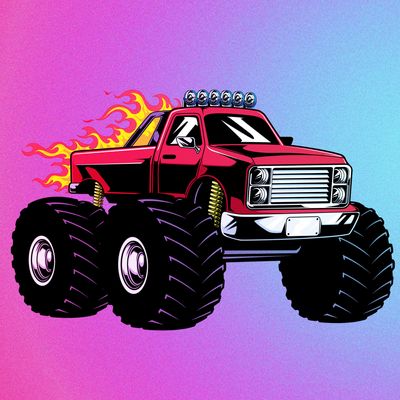
When my daughter was 3 years old, she was a monster truck. “And not a girl,” she said, firmly, by way of disambiguation. When strangers exclaimed what a cute little girl she was, she would cut in to explain that they beheld a fearsome truck, even if the truck was currently eating Goldfish crackers in its stroller.
Long before I became a parent, I would obsess over how I would handle a child’s gender. I was terrified that my child might be trans and that I would somehow fail to support them — that I would give them the wrong messages about gender, thus preventing them from coming out or living as their true selves. I had a distinct memory of being told, at age 3, that I could never be a boy. The adults who told me did so gently, but I was deeply disappointed. My child, I told myself, would never feel that kind of disappointment. If my child were trans, I would listen. I would know.
Eventually, I figured out why this mattered to me so much. I came out as trans just before my daughter’s 3rd birthday. I did it because it was not possible for me to be an effective parent while constantly examining my own life for missed opportunities; in order to be fully there for my daughter, I had to stop projecting my unmet needs onto her. I did it because kids learn by example; I could tell her to love herself, but if I lived in shame and denial, then she would never actually know what self-acceptance looked like.
So I was trans, and my kid was a monster truck. I figured she was shadowing me, testing what it meant to claim an identity. That, or I had really messed her up.
Yet my daughter might have entered her truck era even if I were cis. Children are interested in playing with gender, especially little ones, and toddlers in particular are known to get weird with it. It’s not until children get a little older that they start relying on rules or categories to make sense of the world around them. At that point, they start to see gender in more rigid terms.
“A very common thing that I hear from parents is all of a sudden my child has started saying ‘boys have short hair and girls have long hair.’ Or ‘boys are strong and girls are weak,’” says S. Bear Bergman, founder of Flamingo Rampant, a press that publishes queer-affirming children’s books. Those kids aren’t brainwashed by the patriarchy, Bergman says; they’re just looking for a trusted adult to fact-check their findings. “They’re trying to say, ‘I understand this as a rule.’”
Once young people begin to think in terms of rules, you can talk about them — explaining that not all girls look or dress a certain way, or that genitals don’t equal gender — but even then, Bergman says, the most gender-affirming thing you can do for your child is to listen. It can be as simple as letting them pick out their own clothes or asking what gender they are every time (yes, every time) you have to fill out a form.
“Every time there’s [an] option, check in specifically, like: ‘Which clothes look good to you? What group do you want to be in? Which toys are interesting?’ Rather than assuming that last week’s news is the same as this week’s news,” Bergman says. “Just stay curious about what your kid’s gender identity and/or gender expression look like right now.”
There’s no universal timeline or list of “signs” that your child is trans. Some come out when they’re 5, and some come out when they’re 35. One friend, who asked to remain anonymous, said that he had been so adamant about the feminist-parent thing — no gendered toys, clothes, entertainment, etc. — that his trans daughter didn’t realize she needed to come out until she was 4 years old. She’d just assumed her parents knew she was a girl.
Children are not boxes that we fill up with our values. They’re people, having full, complex human experiences even if they don’t have words to explain them. The more reliable you are as a sounding board, the more likely they are to share. Or, as my friend says: “You can’t make a kid trans, but you can make them feel safe being themselves.”
At age 6, my child is a girl. She’s a girl who would rather take karate than ballet, a girl who wants Joan Jett tickets for her birthday; she’s a girl who is fast and tough, and when there are boys-versus-girls competitions on the playground, she sometimes plays for the boys’ team, because otherwise the girls would win every time. “I’m a strong girl and I can be sassy,” she told me the other night, “so I stand up to bullies for my friends.”
Once, the only term she had for this was monster truck. The longer I know her, the more I realize that monster truck was right. No matter what she’s called herself, she has always known who she is. All I have to do is watch her arrive.

